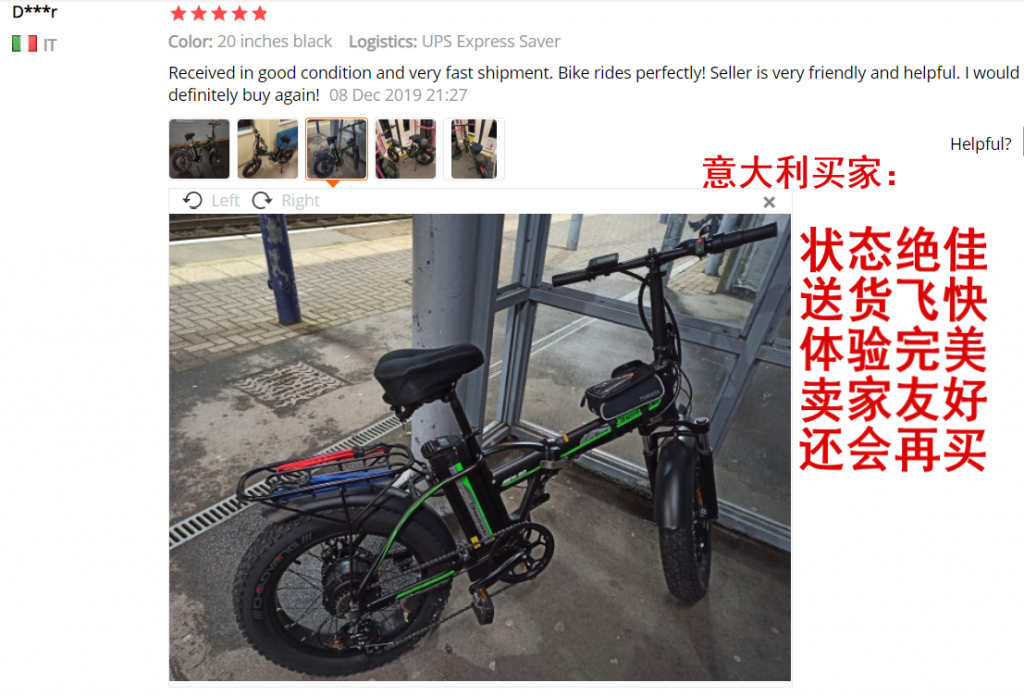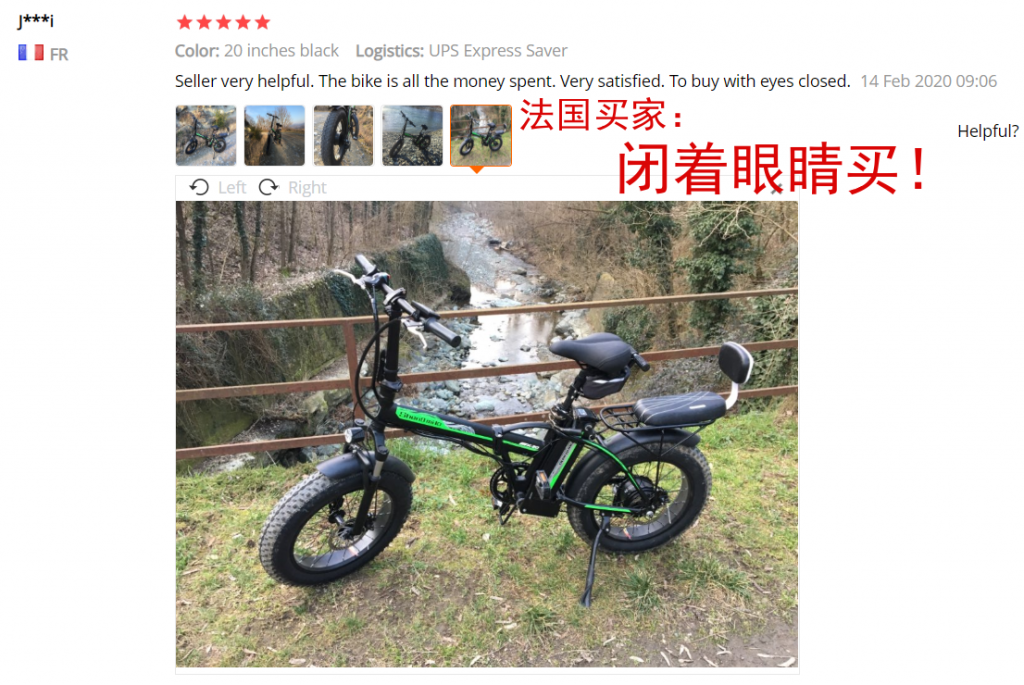In early May, as the epidemic eased in Europe, countries began to gradually “unlock”. Europeans are finally getting out and about, but are still afraid to take public transport, and have started snapping up electric bikes for transportation.
China’s exports of bicycles and electric bikes skyrocketed, even the top-end models were snapped up completely. With workers work overtime, orders are scheduled to be filled 1 month later.
Data from Alibaba’s cross-border e-commerce platform, AliExpress, showed that sales of bicycles in the Spanish market rose more than 22 times in May, while Italy and the UK also rose about four times. Sales of electric bikes also rose sharply, with Italy up nearly nine times, the UK up nearly eight times, France up 380%, and Spain up 280% in volume.
“The stock was sold out. The second batch was sold out while being shipped, and the third batch are 3,4 times bigger.” Bruce Lee, founder of electric bike brand Janobike, said sales have grown since returning to work in March, with a 30-40% month-over-month increase. At present, Janobike cooperates with high-end frame manufacturers have been working at full capacity 24 hours a day, even by “going through the back door”. Guo Zhenhe for the bicycle brand SAVA’s AliExpress, said that since April orders rose more than 30 percent, production capacity is tight, the original order can be shipped within three days, new order will have to wait at least a week.
For electric bike brand Sheng Milo, in May, orders on the AliExpress doubled compared to April. He Chong, the company’s head of operations, said, “Workers work overtime until 12 o’clock every day and orders are still scheduled for a month later.” Sheng Milo is doubling both the size of the plant and the number of workers.
Electric bikes and bicycles are normally priced in the European market at around $1,000 and the high-end models at over $1,600, equivalent to more than RMB 10,000. “Local governments in Europe provided subsidies to encourage riding, and with the subsidies, the low end models are cheap and the high end models are like low end ones for the price. The second phase of the Italian resumption of work, which took place on 4 May, in order to encourage alternative travel and limit public transport congestion, the Government provides subsidies of up to 500€ for the purchase of bicycles and electric bikes. The French Government has announced a 20-million-€ funding plan to encourage cycling in France following the national “un-lockdown” on 11 May. Business owners will also receive government funding to provide a transport subsidy of €400 per person for employees who commute by bike.
In the bicycle and electric vehicle industry, China has a complete supply chain from components to the completely assembled bikes. “China exports more than 70 percent of the global bicycles market share, and even more for electric bikes.” Li Kai, head of the Sports Category at AliExpress said, “The price/performance ratio of Chinese products is significant, and overseas demand has been strong.”
With the epidemic, the overseas retail stores closed down, consumers have chosen online shopping, through the e-commerce platform AliExpress, ushered in a surge of orders in a number of categories. In order to ensure the smooth delivery during the epidemic, AliExpress has expanded the warehouse in Spain, to ensure uninterrupted delivery to France, Belgium, Poland and other countries. Merchants use China-European trains to send goods to European warehouses, which takes more than half a month less than if by sea. With the AliExpress warehouse system in Europe, bicycles and the larger electric bikes, generally reach consumers in 3 days, 7 days for the pan-European regions.
China’s street vendor policy may encourage emergence of street artists
More Chinese artists might take to the streets for performances now that the Chinese government has loosened its grip on street vendors in order to boost the economy amid the COVID-19 pandemic, an official of China’s culture department said on Thursday.
In 2018, Chengdu, Southwest China’s Sichuan Province, became one of the earliest cities in China to launch a street culture program, themed ” a city with music.” Now, in light of the improved domestic COVID-19 situation, street artists in Chengdu have begun to resume their performances, bring back vitality to the city.
“The supporting street vendor policy and the performances of street artists could become a win-win strategy benefiting the local economy,” Zhao Liangliang, an official of the Chengdu Culture Center, told the Global Times on Thursday.
She added that the project has matured nicely over the past two years.
“Some officials from cities including Zhuhan city in South China’s Guangdong Province and Jinan city in East China’s Shandong Province have come here for a visit and communication, and they are considering the possibility of implementing the program in their cities,” Zhao said.
According to reports, a total of 27 cities in China are promoting the development of street vending. Many Chinese netizens have shown their support of these programs and have further called for the promotion of street artist culture as well.
“We could learn from some Western countries to include more street entertainers in addition to street vendors,” a Chinese netizen posted on Sina Weibo.
Street artist Chen Huan Photo: Courtesy of Chen HuanChen Huan, better known by his street artist name Hot Pot Brother, has been a street singer for a year and a half. He told the Global Times on Thursday that in Chengdu, only artists who have a street art performance license are allowed to perform at the 60 designated location around the city, most of which are hot scenic spots or shopping centers. Like street artists in Western countries, Chinese street artists perform for tips.
According to Zhao, artists can apply for four types of performance – vocal performances, instrumental performances, intangible cultural heritage handicrafts and storytelling. Applicants need to submit their CV first and then undergo an interview process in which they must perform in front of professional artists.
She added that the artists usually perform on Fridays and weekends from 5pm to 9pm.
While singing for two hours may sound exhausting to many people, Chen said that it makes him very happy.
“I really like singing on the street. I feel much more relaxed compared to singing on TV. I sometimes lose track of time when putting my all in a performance,” Chen said, noting that one of the most rememberable signs he was doing well was when the audience gave him a total of eight bottles of water during a show.
Street artist Du Jingping Photo: Courtesy of Du JingpingDu Jingping, better known as Du Yuanqi, is one of the first batch of street artists in Chengdu. She told the Global Times on Thursday that she often changes her songs depending on the day’s weather or the theme of some public holidays.
“For example, when I knew I was going to perform on Children’s Day, I prepared some songs that children like,” she said, adding that it was very convenient for people to check what performances are available on an app created by the Chengdu Culture Center.
She noted that she has also been feeling a bit of pressure as the quality of street artists has improved.
“We have about 200 to 300 street artists in Chengdu and some of them have even participated in some popular music TV shows.”
Both Chen and Du said the number of audiences now that they are performing again has dropped somewhat, but that they are still excited to be back on the streets and helping create an atmosphere for residents.
https://www.globaltimes.cn/content/1190623.shtml#.Xtualu1TD40.facebook



